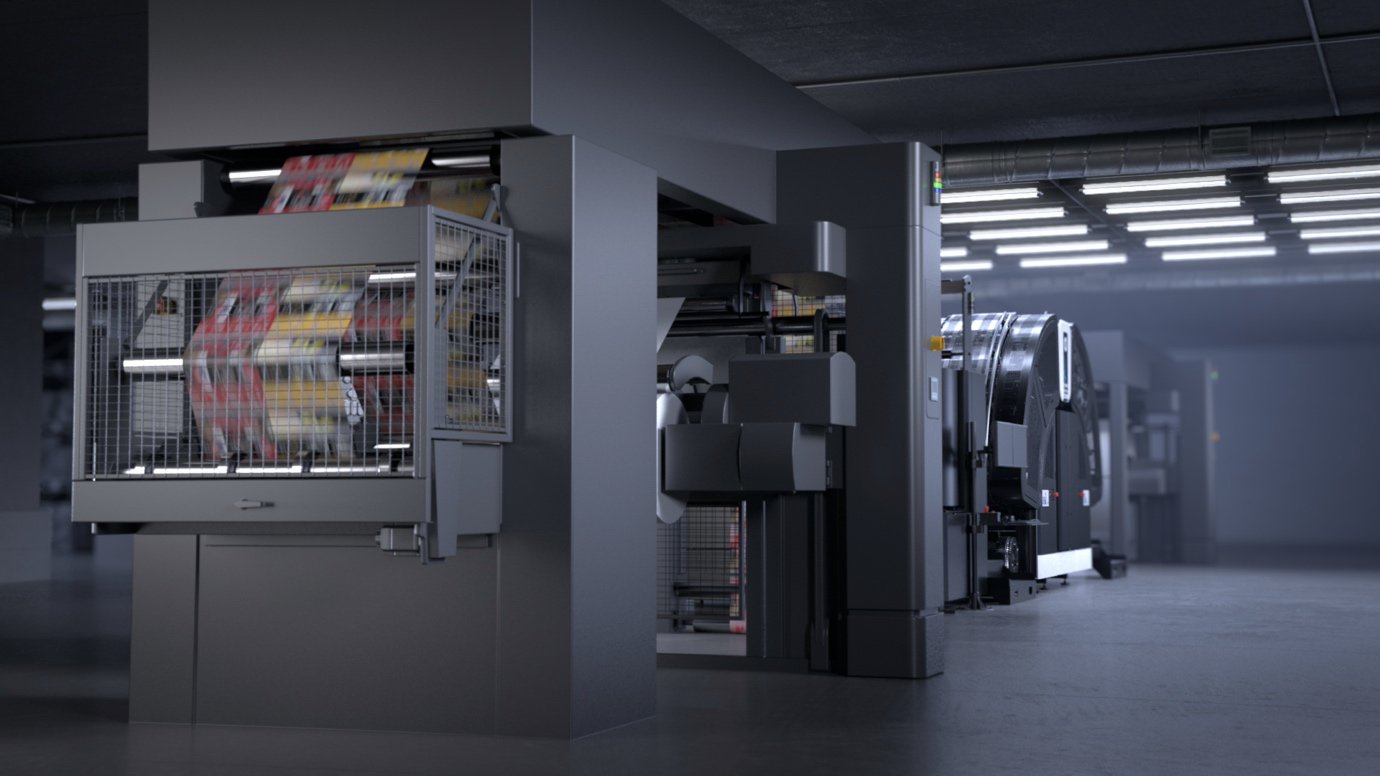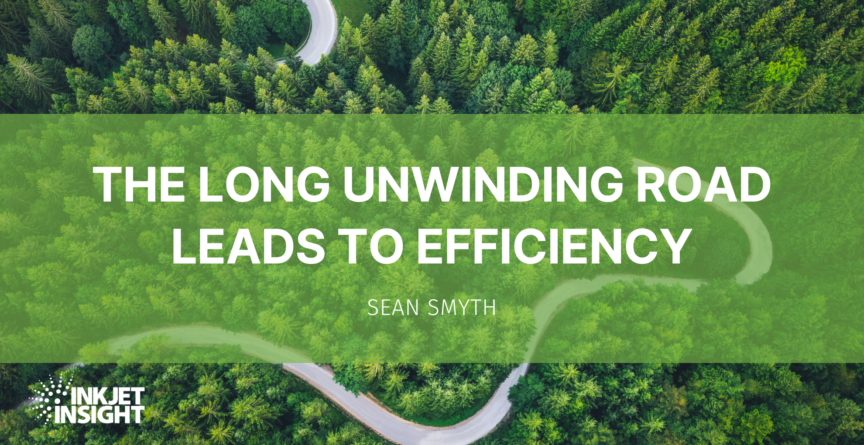As we begin the summer of 2022 there are approaching 3,000 single pass inkjet web presses (press lines not individual print engines) in operation across the world. They are used to print mailings, books, manuals, magazines, catalogues and, increasingly, commercial print. But only a very small percentage, certainly less than a couple of hundred, use auto-splicing technology that allows continuous running when a roll is changed. One user of this technology is Matt Baldwin, VP Operations at European book printing giant CPI, who says, “It’s a no-brainer. Our inkjet presses take an hour to run a roll of paper and with a manual unwinder it takes 10 minutes or so to change a new reel. So we gain 16.7% productivity by using auto-splicers which are on 11 of our 13 presses. With demand for books at the level it has been for the past couple of years maximising productivity has been critical in meeting our customer requirements.” While companies like CPI consider auto-splicing a requirement for their inkjet operations, many companies, particularly those with 20 to 22 inch wide presses may not be as familiar with the technology.
What is Auto-Splicing?
Continuous auto-splicing is straightforward. The infeed has two spindles to accommodate two paper rolls. As one is running the operator removes the old core and loads the new reel. The end of the paper has a strip of double-sided adhesive tape applied with a reflective patch in the middle for the reel stand to detect. When the time comes for a change, usually when there are a few millimetres on the core, the new reel starts to rotate at the press speed. When in the correct position an arm pushes the unwinding paper onto the self-adhesive tape, and the old web is cut a few inches after to create a small tail. The new paper is then unwound into the press with no slowing down.
The splice moves through the press and there should be an automatic routine to ensure the multi-layer splice does not come into contact with an expensive printhead which could result in downtime and expensive repairs. HP calls this process that takes less than three seconds “Jumping the splice.” The process typically leaves a known, non-printed gap that can be automatically ejected in an integrated finishing line.
For a 22 inch (550mm) width machine the auto-splice unit costs about $150,000 compared to $50,000-$60,000 for a simple single web unwinder. It is relatively straightforward to replace an existing unwinder to upgrade an existing press, and the system can easily be transferred to a new press when a press is replaced.
Familiar Technology to Offset Businesses
Continuous feed auto-splicing technology has been part of web offset printing for years, and in publication rotogravure. Press speeds there are much higher than in inkjet, with over 2,000 feet per minute at the low end, with 36 to 65 inch webs common. Failed splices and web breaks are incredibly rare, with tension control helping deliver high quality products at those high speeds. Although speed has increased over the past couple of years, inkjet presses are nowhere near the speed of offset machines. Most run between 200 and 500 fpm although there are 1,000 fpm (300 m per minute) models now from HP and Kodak. The highest speed and width presses are currently the ones most often configured with auto-splicing technology. Kristin Albee, Global Commercial Marketing Strategist, HP PageWide Industrial Presses says that: “Auto-splicers are common in our wider web presses (the 30” and 40” models) and we are seeing steady take up in our T200 series presses, particularly in applications with high calliper substrates.”
One large security print company moved into inkjet technology to replace web offset base stock printing and digital overprint. When they looked to streamline production with a single pass inkjet print line as part of the investment they modelled the operation with and without Contiweb autosplicing as they were familiar with the technology on the web offset machines. They came to the conclusion that they would need three high speed inkjet presses to meet the demand with traditional unwinders, but the extra productivity released from continuous running meant that they only needed two. So that was what they bought.
Jennifer Pennington is Director Product Management & OEM Partnerships at Kodak. She agrees that the main benefit of continuous unwinders is economic, noting that many Kodak Prosper users start off with a simple unwinder and, as their volumes increase, they explore methods to maximise productivity. “About a third of our high speed Prosper 6000 presses use continuous auto-splicing, across all applications including newspapers,” she says. “The economic benefits are readily understood by growing companies, and a linked benefit is for the operators. It helps them do more which can be a critical success factor for businesses in 2022 as they see labor shortages in many areas.”
Paul Baumgart, Product Line Management, CF dry toner products & finishing at Canon Production Print confirms that only a minority of Canon inkjet presses currently use continuous unwinding, but the interest is growing as inkjet grows. Several of their customers now using inkjet are companies that previously ran web offset presses, and they were familiar with the technology and expected to continue handling reels in the same way for inkjet. He points out that, “The auto-splicer allows the press to run for longer with no operator intervention, and it means as operators save time not doing mundane paper changes, they can do more valuable things. We know customers want to utilise their personnel more effectively and this will allow them to have one operator running multiple presses.”
One example is Runbeck Election Services in Phoenix, which runs three HP inkjet web presses to print local and national ballots. As demand for postal ballots exploded in 2020, they moved to auto-splicing, upgrading the original unwinders to release additional capacity. “This is quite a common,” according to Kristen Albee. “As volumes build up and extra shifts are added we see companies adding continuous unwinders so they can increase output from their investments. In many cases, we estimate the ROI is less than two years when our customers add an auto-splicer, and when combined with high-speed productivity, often this can be realized in less than one year. “
For many companies running inkjet web presses using an auto-splicer is a straightforward method of releasing additional capacity on the machines as the volume builds up. They provide great benefits for the bottom line but there are additional benefits that will be discussed in Part 2 of this series.

Contiweb auto-splicer feeding an HP PageWide T250HD press

